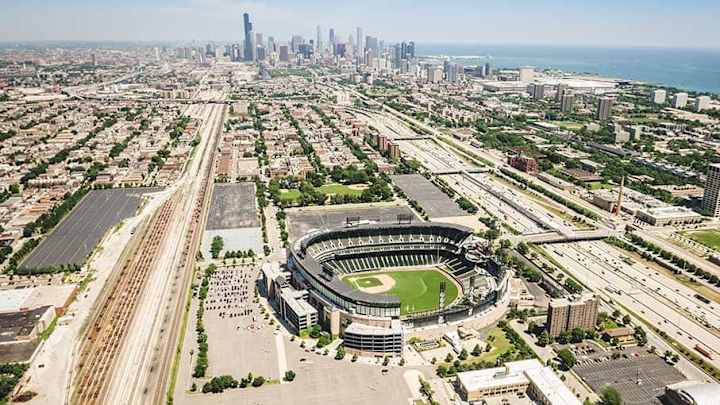Focus on the South Side

The past few weeks have seen a great awakening in the United States. African-Americans have been aware, and have been trying to make everyone else aware, of the systematic racism in this country, with particular focus on police brutality. The murder of George Floyd inspired protests in all 50 states and elicited shows of support and calls to action throughout American society, including sports.
All the major sports leagues in the U.S. have given some kind of statement regarding racial injustice, and many of the teams within the leagues have shared their own statements. SSHP wrote a letter to the White Sox urging them to offer something more substantial to the moment. Like the White Sox statement, the social media posts from other teams might not quite be banal, but they are crafted to be palatable to as much of their audience as possible. "Racism is bad" is the general idea. (It is particularly ironic that the Washington Redskins shared such a message.)
Teams need to do more.
This is particularly true of the White Sox. There aren’t many teams around the country that identify, and market, a connection to a specific part of a city like the White Sox. Sure, we know the Yankees are in the Bronx, the Mets are in Queens, and the Cubs, of course, how can you miss them — but none of those teams are as strident as the White Sox and their use of the South Side of Chicago. The White Sox embrace the image of being Chicago tough (whatever that is, Ozzie Guillén would reference it routinely), blue collar and hard-working. There is one aspect of the South Side, however, that is decidedly muted: It's significantly populated by Black people.
This isn’t to say the White Sox dismiss the demographics of the South Side, but they don’t embrace them, either. It is a tragic missed opportunity, for a number of reasons. First, the social impact especially concerning the BLM movement; second, the rich history that is on the South Side; and third, making a greater impact in the community that houses the team. The White Sox are the South Side's team, and it’s time for them to embrace what that means in Chicago, in the United States and around the world.
Do a quick Google search of “South Side Chicago” and the most common questions that pop up are “Is the South Side of Chicago safe?” and “Which side is the bad side of Chicago?”
This isn’t a new phenomenon. The city’s South Side is viewed as a monolith, just one long stretch from State Street to Indiana. Though the White Sox have done some charity work in the community, they have also spread that work across the city. This isn’t a bad thing, but they should be putting a greater emphasis on the community in which they reside, beyond charity.
The White Sox should highlight the multiple and diverse neighborhoods of the South Side, especially those that surround the ballpark. A great first step would be to celebrate Juneteenth at Guaranteed Rate Field. Wear Negro League throwbacks every year, home or away. Fete over the holiday like MLB does over every other national holiday (except Labor Day, but that’s a whole other issue). It might even convince Lori Lightfoot to make Juneteenth a city-wide holiday. It would also push the conversation to the national level. Obviously any Juneteenth celebration from the White Sox won't happen until 2021, but it would be a great way to keep the conversation going.
And Juneteenth is just one, minor suggestion. The White Sox have the economic power to make a big difference on the South Side. Beyond promoting new baseball fields (which is great, don’t get me wrong), the White Sox could do what the Cubs have done with Wrigley, except in a much, much less tone-deaf manner. Instead of partnering with high-end, boutique providers and calling it "community development," the White Sox should work with community organizations and help develop real partnerships that foster community growth in step with business growth, and community engagement.
There is so much that the White Sox could do that would make a real difference, but it would take a substantial effort. And it might not be the most profitable, at least in the short term.
The White Sox could, if they wanted, become a leader on the South Side instead of simply an occasional visitor each summer. The White Sox should promote more involvement and activism with their fans, and make real substantial change on the South Side and throughout Chicago.

Baseball apostate. Started out a Cleveland Indians fan, worked at Wrigley for three seasons, became a White Sox fan. It doesn't hurt that I like empty spaces meant for many people, like a church on a Friday or a White Sox game on an April afternoon.